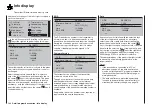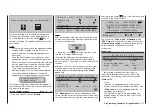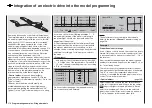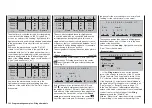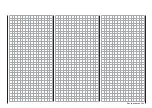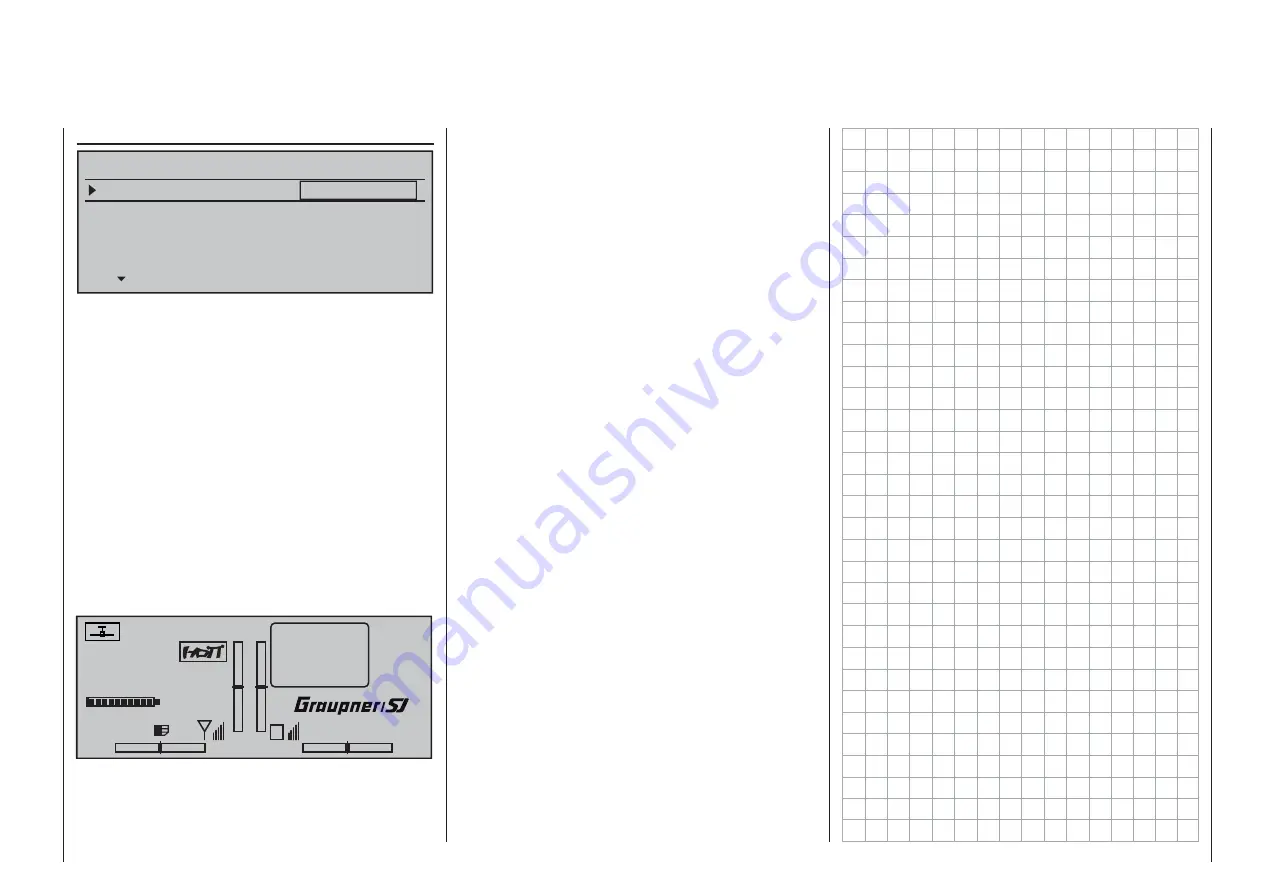
269
Programming examples - Winged models
»Model type«
(beginning on page 94)
Tail type
Motor on C1
Nor mal
None
Aileron/camber flaps
1 AIL
M O D E L L T Y P E
Brake Offset
Input 1
+100%
SEL
… you should determine whether you would like
the minimum throttle position in the "front" or "rear",
because "none (motor)" is entered by the program in
the creation of a model memory as a basic principle.
The difference between "none" and "idle front/rear"
is not only the effect on C1 trimming, which covers
the entire scope of joystick travel with "none" but with
"idle front/rear" only has an effect in the idle direction.
In the process, the "effective direction" of the C1
joystick is adapted accordingly, so that with a change
from "front" to "rear" or vice versa, the rotational
direction of the throttle servo or brake system do not
have to be adapted as well. In addition, with an "idle
front/rear" setting, a warning indication appears in
the display for safety reasons and issues a warning
beep, if the throttle joystick is too far in the full-throttle
direction:
#01
0:00h
Stoppuhr
Flugzeit
K78
0:00.0
4.1V
0:00.0
0
0
0
0
0:00h
M
V
Throttle
too
high!
H-J Sandbrunner
Graubele
RX VOLT:4.9V
In any case, it will be necessary to give some thought
to "special functions".
With electro gliders, on the other hand, it is only
occasionally different. In this regard, one must ask
how the drive and brake system are actuated. Certain
solutions have shown to be practical and others have
shown to be less practical.
For example, it is certainly less practical, if you have
to release a joystick for the approach of a glider
model in order to be able to appropriately control
the spoilers or a crow position using one of the other
controls. It may be more advantageous to either
design the function of the C1 joystick to be switchable
(see Example 4, beginning on page 279) or to leave
the control of the brake system at the joystick and to
control the motor through one of the other controls or
even with a switch! Since this type of model does not
normally have a motor, and just a "start assistance"
function to either "lift" the model in the sky with full
force or, in any case, to "tow" it with "half" force by a
wind fi eld, When this is also mounted in a convenient
to grip location, the motor can be switched on and
off without letting loose of one of the joysticks – even
during the landing approach.
If you cannot decide to have your
Graupner
service
location retrofi t a three-function control switch, order
no.
33000.13
, for this purpose then use preferably
the single-pole, three-function switch, order no.
33001.25
, and mount it to the side of the sender
opposite from the hand in which you hold the model.
In other words: If the model is started from the right
hand, the motor switch should be mounted on the left
side and vice versa.
The idea is the same for the control of fl aps,
regardless of whether only ailerons or fl aps covering
the entire wingspan (combinations) are raised or
lowered. A 3-position switch with a long grip generally
suffi ces for control of camber fl aps, preferably
mounted outboard on the throttle/brake joystick side
There it is always accessible without having to let
loose of the joystick.
If everything is now in order, you can begin with the
programming.
Summary of Contents for 32032
Page 1: ...33020 mc 20HoTT 2 en Programming Manual o Pro Pro mc 20 mc 20...
Page 15: ...15 For your notes...
Page 21: ......
Page 27: ...27 For your notes...
Page 41: ...41 For your notes...
Page 53: ...53 For your notes...
Page 59: ...59 For your notes...
Page 63: ...63 For your notes...
Page 93: ...93 For your notes...
Page 97: ...97 For your notes...
Page 141: ...141 How is a ight phase programmed...
Page 145: ...145 For your notes...
Page 155: ...155 For your notes...
Page 175: ...175 For your notes...
Page 203: ...203 For your notes...
Page 219: ...219 For your notes...
Page 253: ...253 For your notes...
Page 283: ...283 For your notes...
Page 321: ...321 For your notes...
Page 322: ...322 For your notes...
Page 323: ...323 For your notes...












